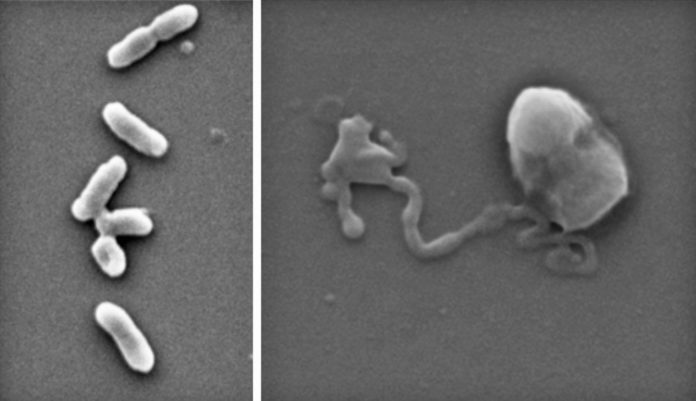Antibiotic resistance is a severe public health problem that claims over 700,000 lives each year. Without new antimicrobial medicines, the annual death toll might reach ten million by 2050, costing the United States $100 trillion in medical expenses.
Although the health consequences of fungal infections are largely unknown, they kill approximately 1.5 million people each year and the number is increasing. Aspergillus, a common fungus that can cause severe secondary infections, is becoming an increasing threat to COVID-19 patients in hospitals.
Now, researchers have developed a unique superbug-killing covering for use on wound dressings, surgical tools, and implants to protect the body from potentially fatal microbial infections.
The antimicrobial coating is one of the thinnest ever developed, and it is effective against a broad range of drug-resistant pathogens, including bacterial and fungal cells, without causing harm to human cells.
The novel coating, invented by a research group at RMIT University, is based on a super-thin 2-D substance that was previously thought for use exclusively in the development of new electronics.
The primary component, black phosphorus (BP), has been proven in prior research to have antibacterial and antifungal properties. However, it has never been properly explored for medicinal purposes.
When applied in nanothin films on materials such as titanium and cotton, which are used to create implants and wound dressings, BP is highly effective at killing bacteria.
Dr. Aaron Elbourne, a co-lead researcher, views the finding of a single compound capable of preventing both fungal and bacterial infections as a significant advance.
“These pathogens are responsible for massive health burdens and as drug resistance continues to grow, our ability to treat these infections becomes increasingly difficult,” said Elbourne, who is also a postdoctoral fellow in the School of Science at RMIT, in a statement.
“We need smart new weapons for the war on superbugs, which don’t contribute to the problem of antimicrobial resistance. Our nanothin coating is a dual bug killer that works by tearing bacteria and fungal cells apart, something microbes will struggle to adapt to. It would take millions of years to naturally evolve new defenses to such a lethal physical attack,” added Elbourne.
“While we need further research to be able to apply this technology in clinical settings, it’s an exciting new direction in the search for more effective ways to tackle this serious health challenge.”
Associate Professor Sumeet Walia of RMIT’s School of Engineering, who is also the co-lead researcher, recently pioneered groundbreaking work harnessing BP for artificial intelligence and brain function.
“BP breaks down in the presence of oxygen, which is normally a huge problem for electronics and something we had to overcome with painstaking precision engineering to develop our technologies,” Walia explains.
“But it turns out materials that degrade easily with oxygen can be ideal for killing microbes – it’s exactly what the scientists working on antimicrobial technologies were looking for. So our problem was their solution.”
As the BP coating dissolves, it oxidizes the outside of bacteria and fungus cells. During this process known as cellular oxidation, cells are broken apart. The efficiency of nanothin BP coatings against five major bacteria strains, including drug-resistant MRSA and E. coli, as well as five fungal strains, including Candida auris, was examined.
According to study co-author Zo Shaw, up to 99 percent of bacterial and fungal cells were eliminated in less than two hours. Additionally, the BP proceeded to decay during that period and was completely dissolved in 24 hours, indicating that the substance would not collect in the body. This study determined the ideal concentrations of BP that have a fatal antibacterial effect while leaving human cells uninjured and intact.
The researchers will now test additional compositions to determine their efficacy on a variety of surfaces used in the medical industry. The team is eager to collaborate with potential industry groups in order to continue funding the research and development, which has been given a temporary patent.
This study is published in the American Chemical Society’s journal Applied Materials & Interfaces.
Image Credit: RMIT University
You were reading: A superbug-killing coating that quickly destroys drug-resistant microorganisms without damaging human cells
